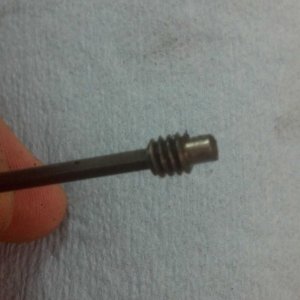- Joined
- Feb 13, 2014
- Messages
- 43
I just bought a used Enco RF-30 (and I am so excited!!.... I am still cleaning it up, and need to build a base for it to sit on).
I loosened the draw bar a couple turns, and tapped out the r-8 collet and drill chuck, and used a mirror and flashlight to look inside the quill. The small key (if indeed there is one....) is worn smooth, or broken off, or otherwise missing.
Is this an issue that needs to be fixed, or should I be concerned??
Lornie
I loosened the draw bar a couple turns, and tapped out the r-8 collet and drill chuck, and used a mirror and flashlight to look inside the quill. The small key (if indeed there is one....) is worn smooth, or broken off, or otherwise missing.
Is this an issue that needs to be fixed, or should I be concerned??
Lornie


